February: A month made for reflection
Frontenac State Park Association newsletter
Vol. 2, No. 2, February 2024
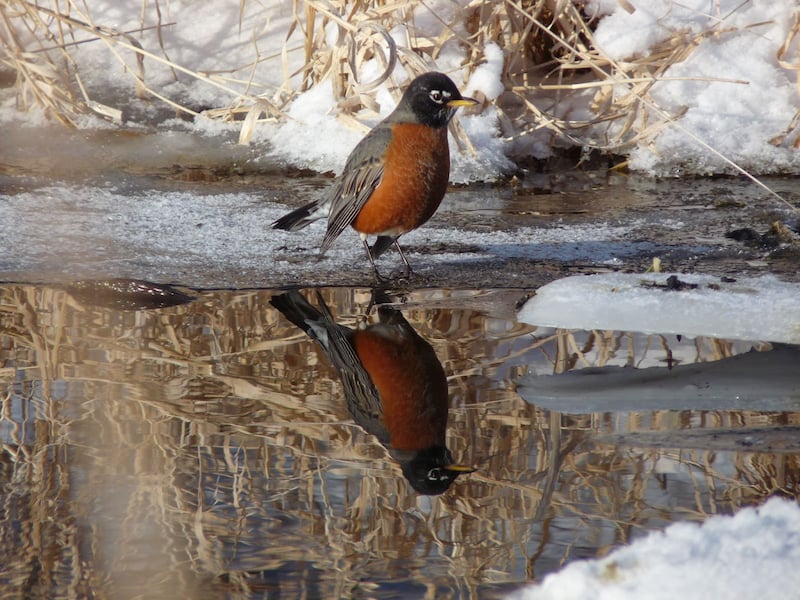
February: A month made for reflection
How many of you out there consider February your favorite month? Anyone? Hello? Anyone? Bueller?
Crickets … we thought so. But we’re here to argue that February is underrated. It carries us one step away from the heart of winter and one step closer to spring, and can be a time of quiet appreciation and awakenings. If February brings to mind the melancholy lyrics of Christina Rossetti’s poem “In the Bleak Midwinter” (“ … frosty wind made moan, / Earth stood hard as iron, water like a stone; / Snow had fallen, Snow on snow, snow on snow…”), we recommend a remedy: A walk, be it in boots or snowshoes, in Frontenac State Park.
Many of us hope February snowstorms will bring a taste of winter’s traditional beauty. But if not, the park will still be lovely and welcoming. Come on out!

And what better time to come on out than for the park’s annual Candlelight Walk/Ski/Snowshoe evening? Join us for that buoying and beautiful event from 6 to 8 p.m. on Saturday, Feb. 24. An easy blufftop trail will be illuminated by bonfires and luminaries, and your Frontenac State Park Association friends will have hot drinks and snacks at the main picnic shelter, where the walk begins. Hope to see you there!
Meanwhile, the FSPA is gearing up for an exciting year. We’ll be doing lots of planning at our quarterly meeting at 3 p.m. Thursday, Feb. 15, at the Park picnic shelter. Interested in joining us? You’re welcome to attend.
We also hope to see some of you at February events related to the Lake City Public Library’s “Big Year,” in which several Frontenac State Park Association members are participating. (It kicks off Jan. 30, just before you get this newsletter.) Here are February’s events:
Eagles of Red Wing: 6 p.m. Thursday, Feb. 15, at the library. A talk by local nature photographers Earl Bye and Cara Clark.
The Great Backyard Bird Count, Feb. 16-19: Find out how you can participate at birdcount.org/participate/.
The Phenology of Lake City and Frontenac: 6 p.m. Thursday, Feb. 22, at the library: A talk by interpretive naturalist Bruce Ause about the cyclical and seasonal natural phenomena in our area.
Folky Chicken Painting: 6 p.m. Thursday, Feb. 29, at the library. Willow Gentile leads a chicken painting activity for adults.
Three images celebrating snow…
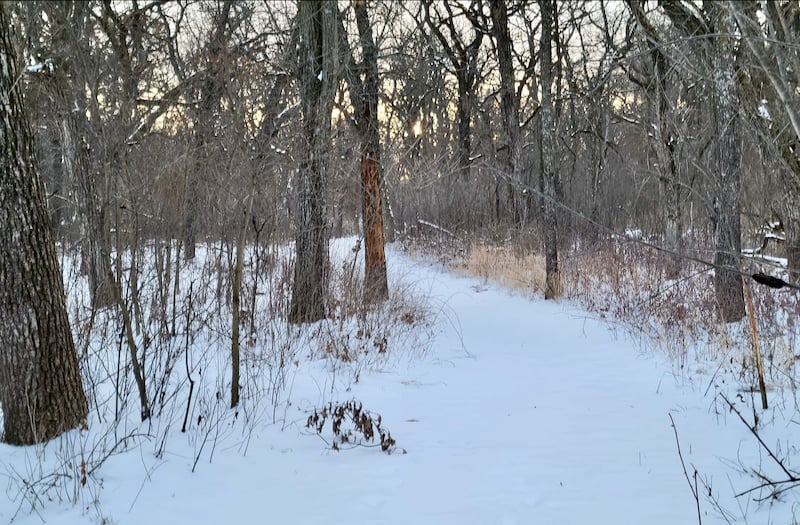
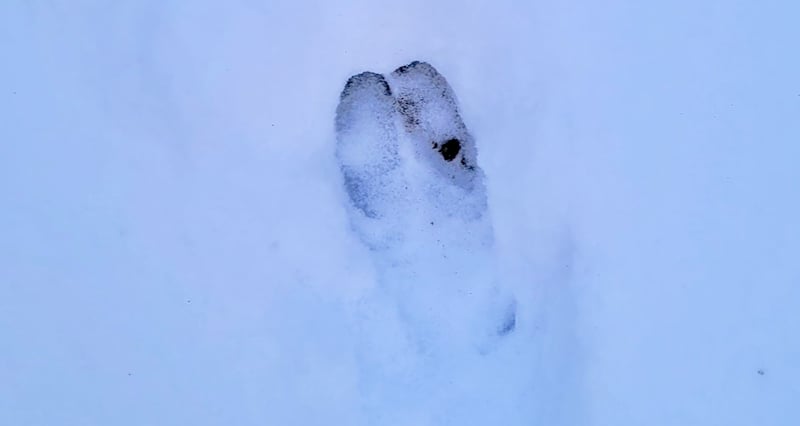

How we welcomed 2024
Warm thanks to all the visitors and FSPA volunteers who came out on Jan. 1 for our third annual First Day Hike! Eleven volunteers greeted around 60 visitors who stopped by the main picnic shelter. We really enjoyed chatting with you all and finding out what you like about the park. A few photos, courtesy of FSPA member Barb Partington.
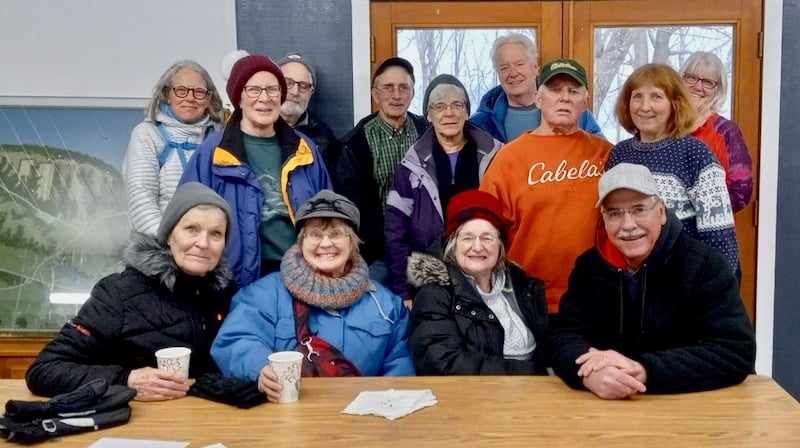


Q&A: Amy Poss, Frontenac State Park’s lead field worker
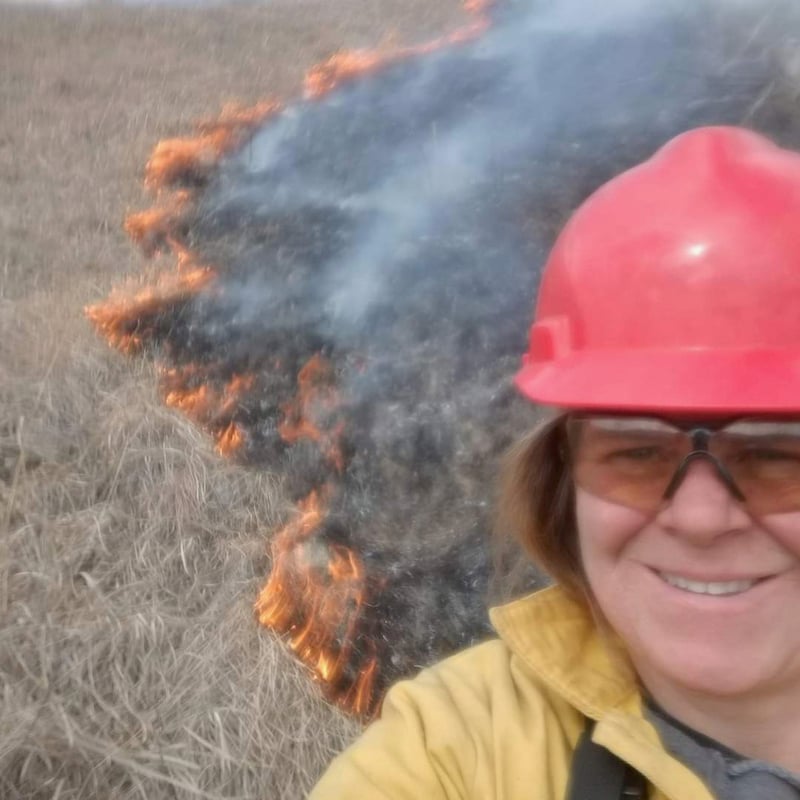
By Pamela Miller, FSPA newsletter editor
Frontenac State Park has a number of behind-the-scenes workers who keep the park operating, pristine, and beautiful. Chief among them is lead field worker Amy Poss. We asked Amy some questions recently about her work in – and love for – the park.
Tell us a little about yourself: I am 51 and live in Lake City with my husband, Jamie, and two huge dogs, Simba, a silver lab, and Medusa, a Great Dane. We raised three children here. My oldest, Kelsey, also works at Frontenac State Park. My son, Austen, is a teacher in Lake City, and my youngest, Mariah, is a nurse at Sanford Medical Center in Fargo, N.D. I grew up in Old Frontenac and have always had a bond with the park and this area. Fun fact: My grandfather, Roy Carls, was head engineer for construction of County Road 28, which goes through the park. It was the steepest slope in Goodhue County when it was built.
How did you come to work for the park? I started working here in 2002 in night security while attending school in River Falls, WI, for environmental education. In 2013, I transferred to the east metro, working on water accesses and the Gateway Trail for two years. I then transferred to Rochester area, where I did maintenance on public water accesses, the Douglas, Goodhue Pioneer and Great River Ridge state trails, Snake Creek ATV trails, and the Hay Creek and Zumbro Bottoms horse trails, as well as clearing log jams on the Zumbro and Cannon River state water trails. I returned to Frontenac in June 2018 when my mentor, Wally Siewert, retired as the park’s labor, trades and equipment operator.
What do you like most about your job? The variety of work. My daily tasks change with the seasons. I also enjoy the never-ending problem-solving involved in working in so many different conditions outdoors in nature.
Describe some of your work: My passion is resource management. The prairie diversity in this park is something to be proud of! Eagle Point's understory was riddled with buckthorn when I started, as well as the fingers on the former Kuhl family property (now Rattlesnake Bluff and its trail system). After 20 years of cutting, spraying, burning and goat grazing, these areas are returning to a beautiful diverse oak savanna. We are currently working on the newly acquired Waconia Cliffs property. I can’t wait to see what the next 10 years bring.
What are your favorite places in the park? I have several, so it’s hard to narrow that down. Eagle Point, the Bluffside Trail, Sand Point, and the former Kuhl property (Rattlesnake Bluff) are my top ones.
What would you tell visitors new to the park about where to go? When visitors ask what there is to see, I try to get a feel for what they are up for. I recommend the bluffside trails most often, but do my best to make sure they are up for its physical challenge. If not, I tell them of the beautiful overlooks along the flat upper bluff or how you can get to Sand Point and dip your toes in Lake Pepin. If someone has frequently visited the park and is looking for something new, I may send them to the former Kuhl property (Rattlesnake Bluff and its trail system) to get a look at less-traveled land.
Twigs tell a tale of a warm winter

This seemingly innocuous photo holds a little story about our warm winter. We’ll let Bruce Ause, interpretive naturalist and FSPA member, tell it:
During the warm spell in early January, I noticed sap was running and dripping down the trunk of our large, soft maple tree [Bruce lives in Wacouta, near Frontenac State Park]. Upon further investigation, I discovered numerous small twigs on the ground around the base of the tree. Gray squirrels were snipping off the twigs and drinking the sap as it oozed out. In the past, I have observed squirrels licking on sapcicles, but I’d never yet observed this behavior.
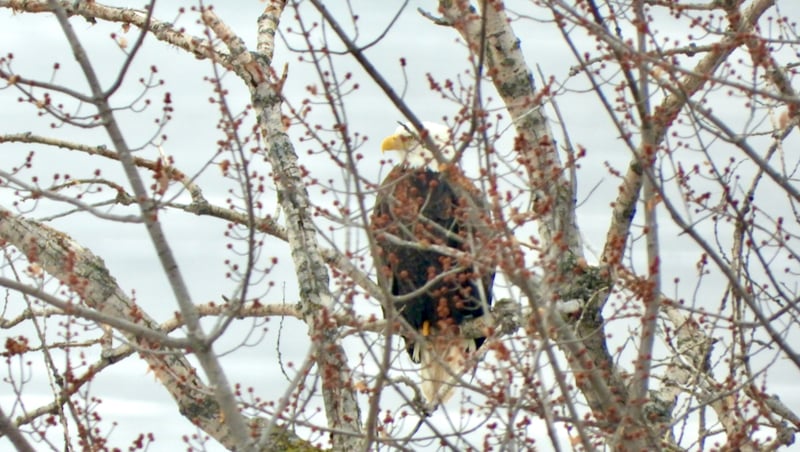
Bird notes: Is it a bird or a plane?
By Janet Malotky, Master Naturalist volunteer
While traveling recently in the southeastern United States, I noted with secret satisfaction the excitement others expressed on seeing a Bald Eagle soar overhead. We are so fortunate, living along the Mississippi River, on land brimming with water.
Bald Eagles love it here, where open and relatively clean fresh water, thick with fish, can be found year round. We see them all the time, sometimes by the dozens, dotting the river shoreline, chilling on the edge of the ice, or feeding roadside on an unlucky deer. It’s thrilling to see a pair of Baldies wheel over the water in their tandem courtship dance, spinning together with talons joined, their white heads and tails flashing in the sun.
But wait a second. Some do not have white heads and tails flashing in the sun. They’re basically dark all over with some smudgy white blotches here and there. Those must be other birds, right? Golden Eagles? We have those too. They must be Golden Eagles!
This is a common and understandable conclusion. We do have both kinds of eagles in our area. And they are of similar size, though Goldens are a bit shorter and heavier than Baldies. They both soar on rising thermals and eat other critters, dead or alive. Plus, our national bird has that majestic white head shining in the sun. So what’s the issue?
Well, the thing that makes this ID tricky is that Bald Eagles take a full five years to get their white heads and tails. In the meantime, the immature birds are basically dark all over, with some smudgy white blotches here and there. And young Golden Eagles, soaring in the sky, look basically dark all over with some white blotches too. So what’s a bird watcher to think?
When confronted with this ID dilemma, it’s best to first ask yourself two questions: When, and where, are you seeing your bird?
The when: Bald Eagles are here year round. Golden Eagles are here only in the winter, from November through March. A few have been spotted passing through Minnesota during spring and fall migration, but if you see your bird in spring, summer, or fall, it is overwhelmingly likely to be a Baldie.
Next, note where you are seeing your bird. Baldies are everywhere around here. They can be seen over rivers, bluffs, farm fields, flower-filled prairies, marshy bogs, and neighborhoods in town. Golden Eagles are much harder to find. They hang out in bluffs near their hunting grounds on the goat prairies, away from the river. They eat rodents and wild turkeys, not fish. And there are far fewer Golden Eagles in our area, perhaps just 120 or so birds in the Driftless bluffs of Minnesota and Wisconsin. So if your bird is hanging around Lake Pepin, it’s unlikely to be a Golden.
Lastly, examine your bird’s features. In flight, the immature Baldie’s head extends in front about the same distance as the tail extends behind (foreshortened in the Baldie photo below). The Golden has a much shorter head than tail extension. The immature Baldie has white splotches underneath that extend into its “armpits” like smudgy deodorant, as Scott Mehus of the Golden Eagle Survey likes to say, and it's got an overall mottled appearance. By contrast, the immature Golden is more uniformly dark underneath, with two white patches mid-wing -- never in the armpit -- and a light tail band. An adult Golden is all dark underneath. Goldens, no matter their age, have an golden-orangey nape, the part of a bird that extends down the back of the head from the crown to the shoulders. And, as we all know, the adult Baldie’s head is shining white.
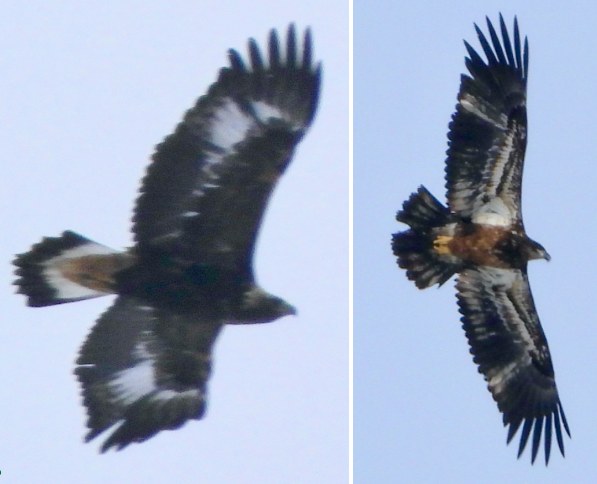
It’s a bit unfortunate that birds never read bird ID manuals. In any individual bird, smudges and patches, head extensions, and tail bands can be more or less distinct. Like us, they each do their own thing. But here’s hoping these pointers can help you appreciate our awesome eagles, whenever and wherever you find them.
From the Field: Birding in Frontenac 1914-1940
By Steve Dietz, Master Naturalist volunteer
At the First Day Hike FSP, supporter Jim McLaughlin shared a treasure he had unearthed: a 1940 remembrance by Eleannor B. Jilson in the archives of the Minnesota Conference of United Methodist Church about pre-eBird birding in Frontenac.
Many of us have probably heard various echoes of the 2019 study, which estimated that over the last 50 years we have lost 1 in 4 or over 3 billion birds(!) compared to 1970, including many backyard favorites, which are not necessarily endangered but nevertheless occur in far few numbers (reported here).
Against this backdrop, it is fascinating to read Ms. Jilson’s account, “Birds at Frontenac,” and the changes she had observed over a 26-year period, which is excerpted below with some minimal grammatical editing and comments in [brackets].
There is probably no finer place in Minnesota in which to watch the birds, especially during their migration, than in the village of Frontenac with its surrounding country of lakeshore, marsh, and woodland. I began to watch the migrations at Frontenac in the spring of 1914, and have been there each May and August up to the present day in 1940.

The sandy shore of Point au Sable [Sand Point] has brought me many interesting discoveries - one large flock of Marbled Godwits, the largest of our shore birds, an occasional Piping Plover [amazing!], the loveliest of that family in my opinion, many Ruddy Turnstones and Sanderlings, both formerly rare in Minnesota, but now regular spring and late summer migrants and … a single Western Snowy Plover, a bird of the Pacific coast of which there had been no previous record in Minnesota. That was an exciting experience…. As no specimens were taken, ornithologists are usually loath to admit the identity of a bird so rare in the locality through sight identification alone, but Dr. Thomas S. Roberts in his book “Minnesota Birds” included this report of mine as “no doubt true.”
The sight of the majestic BaldHeaded Eagle over the lake is always a thrilling one, as is the swift flight of the Duck Hawk [Peregrine Falcon], both birds unfortunately seldom seen but never forgotten.

Among the interesting changes in the bird life of Frontenac in the past 26 years has been the arrival of the [Northern] Cardinal as a permanent resident. As far as I have heard none have ever been seen there until on May 7, 1919 I saw the first one…. Since that time they have become year round residents.
Another once rare species which is now a regular resident is the lovely Blue Gray-Gnatcatcher, one of the most sprightly and fairly-like of all our small birds. The first one I saw was in May 1923 and soon after that each summer in early August I found so many in the woods near Point au Sable that it seems more than probable that they were nesting in the vicinity. [They still are.]
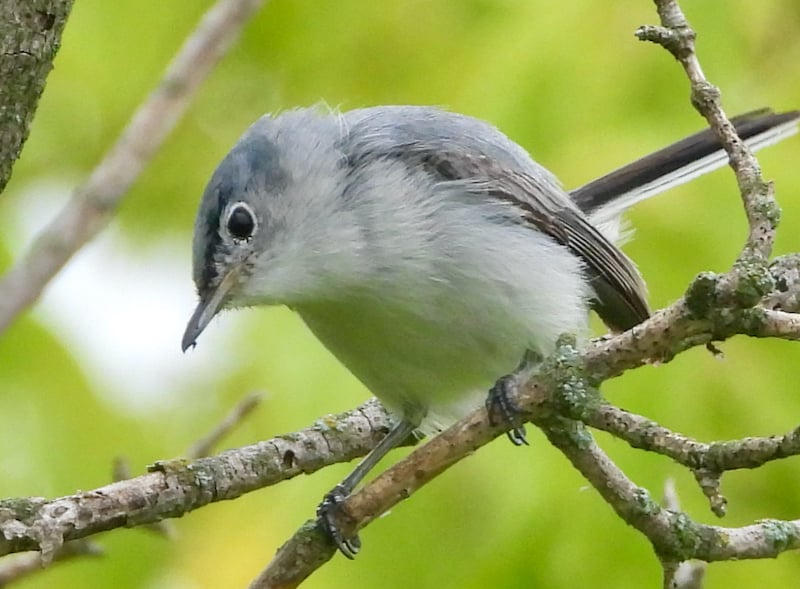
The splendid Pileated Woodpecker, once rare, is now a regular inhabitant of the deep woods, easily recognizable by its loud rattling call, which can be heard at a great distance.
There seems no reason to suppose that it would not be possible to find almost any bird at Frontenac, as the Mississippi River is one of the principal lanes of migration in the United States, and the flocks of migrants flying, north in the spring follow the river…. The country is varied to suit all the different feeding habits, and the flowering plum, apple and white cherry trees, as well as the many kinds of oaks attract the warblers, whose migration to the bird lover is the most interesting phase of the marvelous journey which the birds undertake twice a year, covering thousands of miles to and from their nesting grounds. [Amen!]
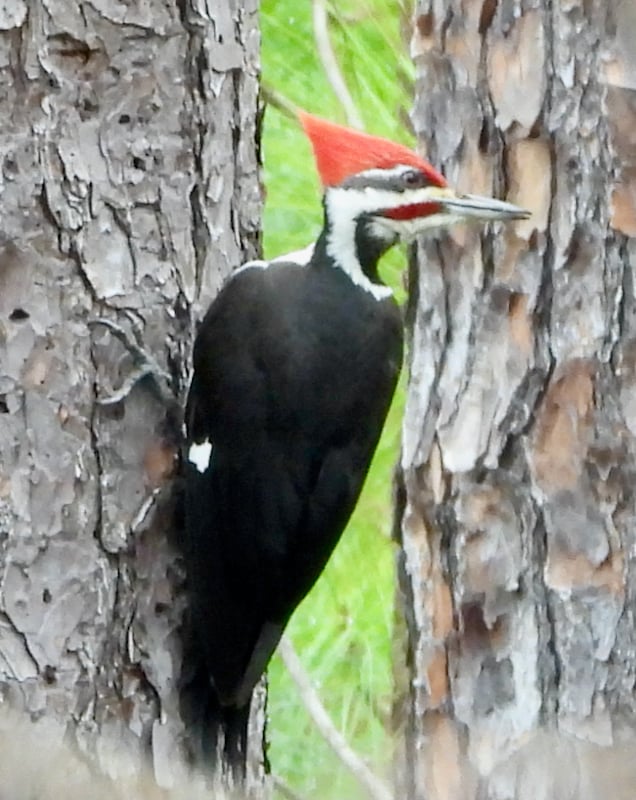
Poem of the month
“CLOUDS & MIST”
By Ted Tollefson (Old Frontenac, Minn., poet)
Winter days on the tundra begin like this:
clouds & mist, mist & clouds
white and gray wherever you look
as if a cloud had fallen to earth
and was not able to return
to its bright blue home.
All seven directions wrapped
in gray and white
and if we’re lucky
mid-day sun will shine through
and we can bask in light
just like a rainy winter day in Berkeley
except 30 degrees colder.
In this surrounding haze
thoughts and feelings turn
gray and white
distinctions get lost
and like a dream
past, present and future
fold into a single field
where no thing is clear
and anything feels possible.
On such days
I breathe deep,
count my blessings
and hold fast to the bounty
that is.
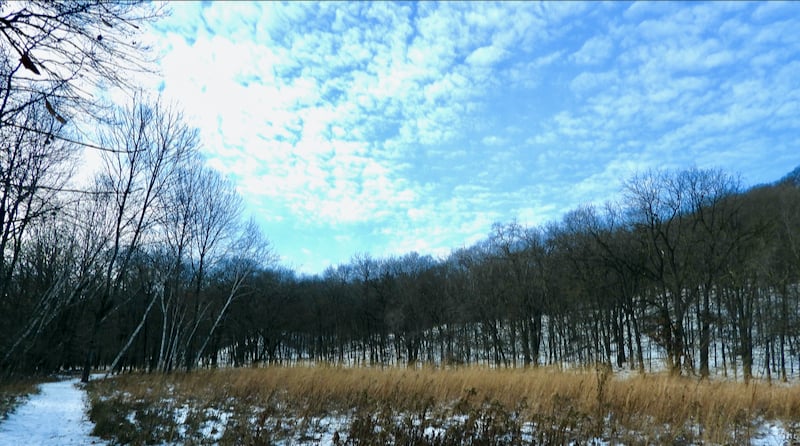
Interested in joining the FSPA?
We’d love to have your support (dues are $25 per year for an individual, $35 for a couple). Here is a link.
A reminder that joining us occasionally to help the park out with volunteer efforts is awesome too, even if you’re not a member. The FSPA’s goal is simply to share our love of Frontenac State Park with as many people as possible.
To sign up to regularly receive this monthly newsletter, click on “Subscribe” below. Feel free to send questions or comments to your newsletter editor at pamelamarianmiller@gmail.com. Questions about the FSPA? You can reach FSPA chair Steve Dietz at stevedietz@duck.com.
Handy links for more information and education
Frontenac State Park website
Frontenac State Park Association website
If you take pictures in the park, tag us on Instagram
Frontenac State Park bird checklist
Frontenac State Park on iNaturalist
Parks & Trails Council
Website for our township, Florence Township
Minnesota Master Naturalist program
Red Wing Environmental Learning Center
Lake City Environmental Learning Program on FB
Visit Lake City
Frontenac State Park staff
Jake Gaster, park manager; Amy Jay, assistant park manager; Amy Poss, lead field worker
Parting shots
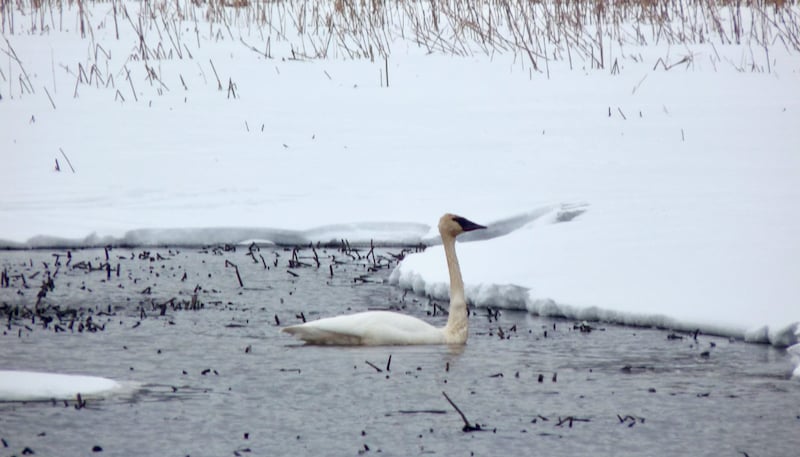
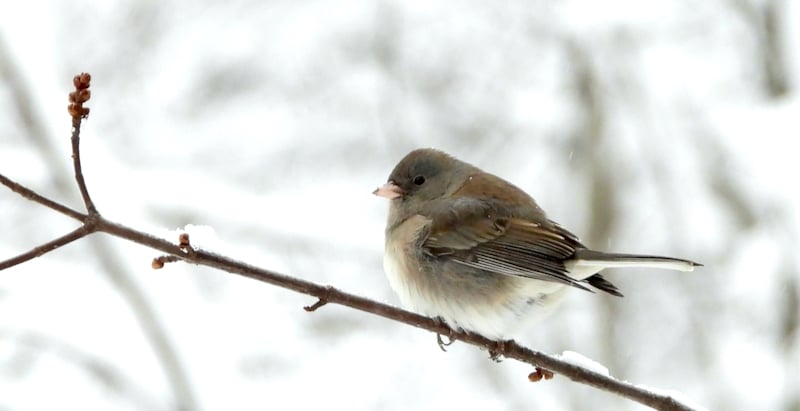
Thank you, readers and park visitors!
This is Volume 2, No. 2 of the Frontenac State Park Association newsletter, which was launched in April 2023.
Here’s where to browse the full archives of this newsletter.